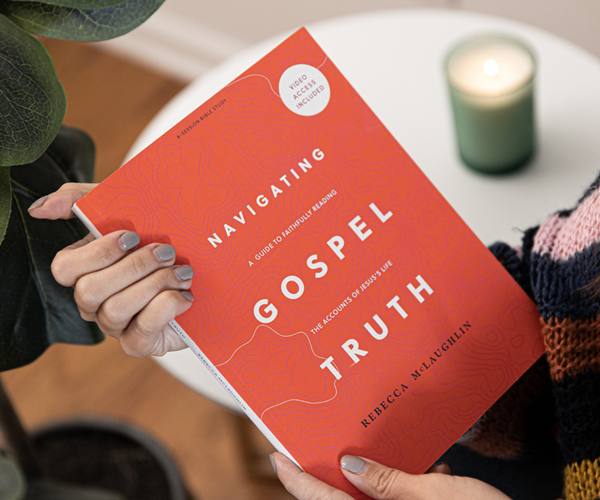I generally like food. But there’s a short list of commonly ingested items that I find deeply disgusting. Mustard is one of them. I could just tell you, “I hate mustard.” But if I said instead, “I hold this truth to be self-evident, that mustard should never be put on a burger,” you’d know I was channeling the Declaration of Independence to make my point. In any culture, there are certain texts—ancient and modern—that everyone is expected to know so that they can be quoted or alluded to and everyone will get it.
Let’s look at some examples of direct and indirect quotations from Old Testament prophecies in the Gospels. Jews of Jesus’s day would have known the Old Testament Scriptures very well—not from reading the text themselves but from hearing it read and taught. They would have picked up on allusions that you and I need help to recognize. Sometimes, the direct citation of an Old Testament text is like the tip of an iceberg. We need to see the rest of the text beneath the surface of the narrative to understand its meaning and importance. We’ll look at one example from the beginning of Jesus’s public ministry in Luke and an example from the end of it in Matthew.
In Luke 4:16-21, Jesus was preaching His first recorded sermon in His hometown synagogue. He stood up to read from the scroll of the prophet Isaiah and found Isaiah 61.
The spot in the text where Jesus stopped reading is significant. His audience would likely have known that in Isaiah 61:2, “to proclaim the year of the LORD’s favor,” is followed by “and the day of our God’s vengeance.” At that moment, Jesus was opening the window of opportunity for salvation. The day of God’s vengeance against His enemies had not yet come.
Observant Jews of Jesus’s day would have been far more familiar with Old Testament texts than most of us are today. Rather than each having their own Bibles to refer to, they would have been much more dependent on memorization. Often when the Gospel authors drew connections between Jesus’s life and the Hebrew Scriptures, they expected their readers to be familiar with a passage beyond the portion that was directly quoted.
Matthew is the Gospel author most known for citing Old Testament texts and showing their fulfillment in the life of Jesus, but he also embedded allusions to the Hebrew Scriptures in his narratives without always calling them out. In Matthew’s account of Jesus’s trial, abuse, and crucifixion, the explicit quotation from the Hebrew Scriptures comes from Jesus Himself when He quoted the beginning of Psalm 22 in Aramaic: “‘Elí, Elí, lemá sabachtháni?’ that is, ‘My God, my God, why have you abandoned me?’” (Matt. 27:46). But Jewish readers of Matthew’s Gospel would likely have spotted parallels with Psalm 22 throughout the crucifixion account.
In John’s account, the connection with Psalm 22:18 is made explicitly. When the soldiers crucified Jesus, they took His clothes and divided them into four parts, a part for each soldier. They also took the tunic, which was seamless, woven in one piece from the top.
So they said to one another, “Let’s not tear it, but cast lots for it, to see who gets it.” This happened that the Scripture might be fulfilled that says: They divided my clothes among themselves, and they cast lots for my clothing. This is what the soldiers did.
John 19:24
But while Jesus was evidently fulfilling Psalm 22 in His crucifixion, Psalm 22 does not explicitly predict the crucifixion as a future event. Rather, it foreshadows it, as God’s anointed King (David) described his suffering in terms that God’s ultimate anointed King (Jesus) would finally fulfill. Take some time to reflect on Jesus as the fulfillment of all the Old Testament Scriptures—both those that make direct predictions and those that foreshadow His identity and work.
This article is an excerpt from Rebecca McLaughlin’s Bible study, Navigating Gospel Truth.
THE NAVIGATING GOSPEL TRUTH ONLINE BIBLE STUDY
Study the Gospels this Easter season with our next online Bible study—Navigating Gospel Truth by Rebecca McLaughlin. Gain a more captivating view of the Savior as your confidence in the truth of Scripture grows over 8 sessions. Join us beginning February 29!


